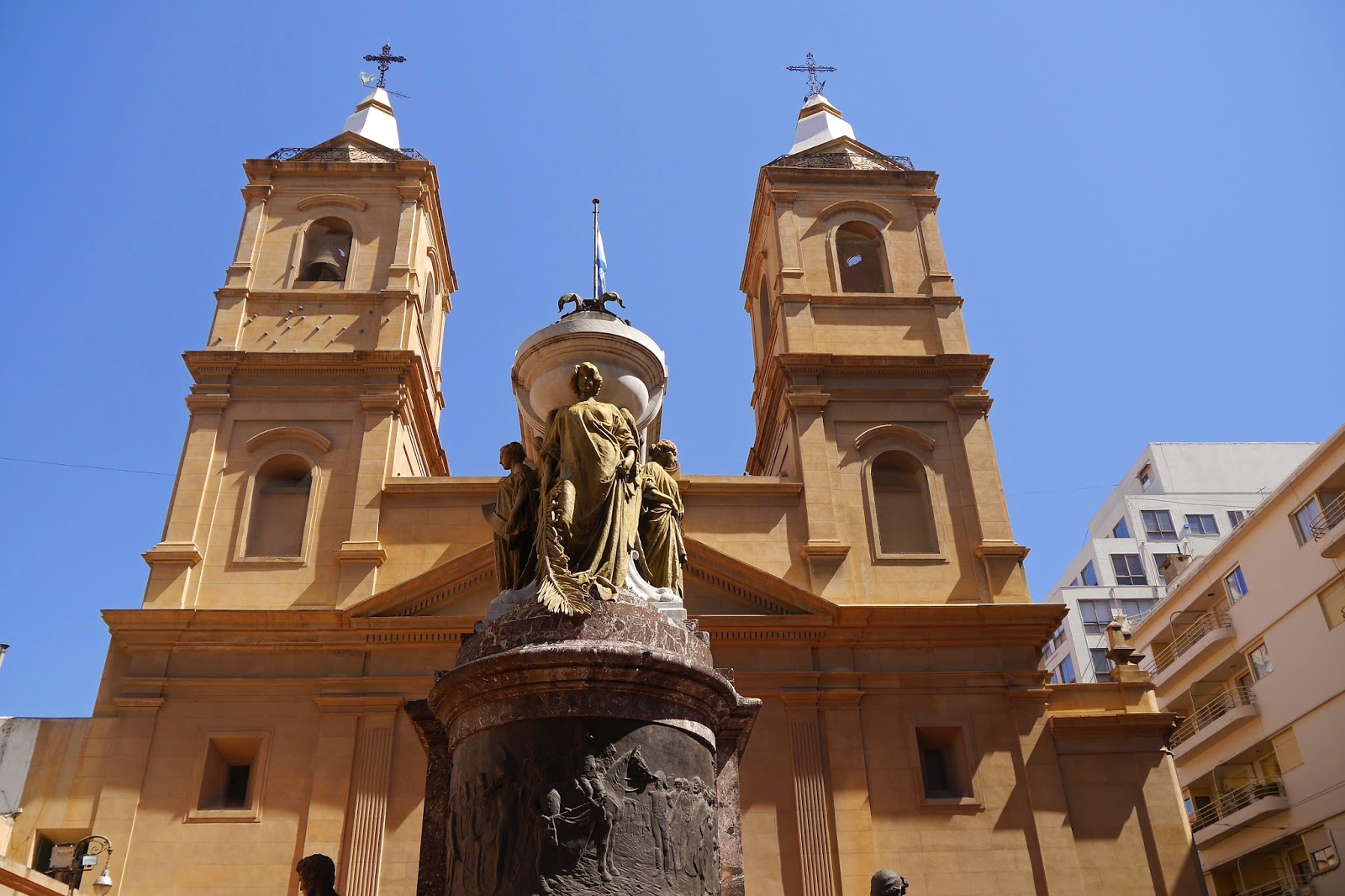
Plaza Dorrego
We started this art nouveau based walk in the lively Plaza Dorrego, where there is always a couple displaying their tango skills. We had just finished our first tango lesson nearby and were discovering first hand how hard it is to master. The walk itinerary came from the website of the Art Nouveau Association of Buenos Aires, although sadly we only had the time and energy to do part of it in the blazing heat.
The first building marked on the itinerary was in the square itself, the narrow Hotel Boutique, which did not seem especially art nouveau to our eyes.
We walked along Defenza where on the right there was an impressively ornate pink facade above a shop.
Further up on the left an antique shop had a wonderfully distressed facade
While to its left (we had unawarely walked beneath it) was a building in an Art deco style with Spanish details.
Now we turned left into Estados Unidos to pass the San Telmo Mercado (Market) of 1895.
A right turn into Chacabuco brought us to the simply fantastic Casal de Catalunya, the highlight of this walk. The smaller building on the right is the Teatro Margareta Zurgu. It was built between 1886 and 1927 and seems to have been a Catalan cultural centre. It now houses a restaurant.
Here are some more detailed views of the facade. The first one shows St George killing the dragon: he is the patron saint of Catalonia, as well as of England, Portugal, Lithuania and many others.
We made a slightly disappointing detour along Chile to turn into Piedras where just round the corner stood a tall building with elaborate surface decoration. I suppose the flower motifs qualified it as art nouveau.
Back to to left into Chacabuco. On the corner of Venezuela was a lovely building which reminded us of the so-called Spanish Colonial version of art deco we saw in Napier in New Zealand.
At the top we turned right into Belgrano with the extraordinary Edificio Otto Wulf on the left. It was started in 1913 and was designed by the Danish architect, Danish Morten F. Rönnow.
The colossal figures at the base of the columns, apparently called atalantes, represent craftsmen who worked on the building. I had thought they would be figures from mythology.
Further along on the right was the Santo Domingo basilica with a massive monument to Belgrano in front. He is known mostly as a military commander in the wars of independence and also as the creator of the Argentine flag, but was also an economist, lawyer and politician.
The walk ended in Av Paseo Colon at an undistinguished office with a beautiful door of the kind you could find in Nancy or Paris.
Conditions: Very hot. About 26 degrees, regarded as cool here.
Distance: about 3 km.
Rating: four stars















No comments:
Post a Comment